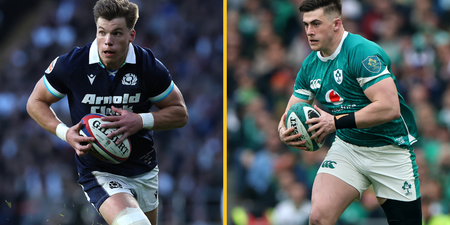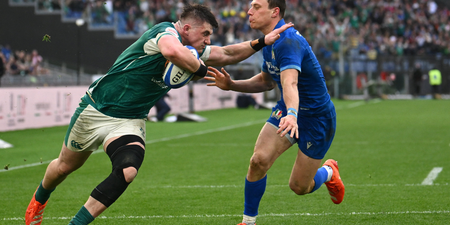The golf bug comes for us all.
Even after you go out and shoot a round of 204, even after you run out of balls – having started with 10 and picked up any stray ones you could find along the way – it only takes one good shot to drag you back.
One free, fearless swing of a club, connecting perfectly with a little white cratered sphere, following through like you even know what you’re doing and watching it land somewhere in the direction you aimed it. It’s a real addiction, one where you’d put up with all the shit of the world just to strike a ball like that again.
Unfortunately, as you learn after countless repetition at the driving range, the good shot was probably mostly down to luck and not because of anything you were knowingly doing.
And, so, like anyone in their right mind would end up doing, help is sought out and it comes in the form of PGA Pro Neil McNulty at Farnham Estate.
The course there is big and beautiful and not ready to be dug up by an… whatever comes before amateur. And this amateur (or whatever we’re calling it) is definitely not ready to navigate through some of the admittedly charming but difficult tree-trapped holes.
So Neil McNulty does his best and breaks down the essentials for a beginner into three very simple phases.
- Grip
- Posture
- Body movement
Here we go.
What’s the most important thing I need to know?
“The grip would be the most important thing for a beginner because it’s the only contact you have with the club so it’s important to hold it the correct way.”
Is there a certain… way… of gripping the club?
“There are three types of grip: Strong, weak and neutral.
“You want a good neutral grip. A strong grip would mean a closed club face which will mean the ball goes left (right handers). A weak grip would mean an open club face which results in a slice out to the right.”
So how do I make sure I have a neutral grip?
“The key would be to keep it in your fingers.”
Then what?
“Feet, hip, shoulders all aiming the same way. Good posture so we can turn. Head out of your chest (especially if you’re tall), if it’s looking down against your chest, you can’t turn so keep the chin up a little bit. Then it’s letting the body do the work then.”
How much turn should you bring into it after the strike? I’m always worried about turning too much.
“You have to go through it. Most amateur players fall backwards, trying to stay in place. They go backwards and then it goes left or right depending on how their hands have moved. Hand-eye co-ordination comes into it at that point and, if it’s good, they might get away with it sometimes.”
What’s the first thing I should do as someone who wants to get into it properly?
“For a beginner, it’s always advisable to get a few lessons so you’re not picking up any bad habits. Whereas if you play for two years and then you go to a lesson, we’re trying to engrain the bad habits out of you and it’s harder to change.”
Look, it wasn’t a miracle round but it was slightly – ever so slightly – better than the usual round of 204. You can get in touch with Neil and Farnham Estate here.
WATCH: Liverpool BOTTLED the title race 🤬 | Who will win the Premier League?




















































